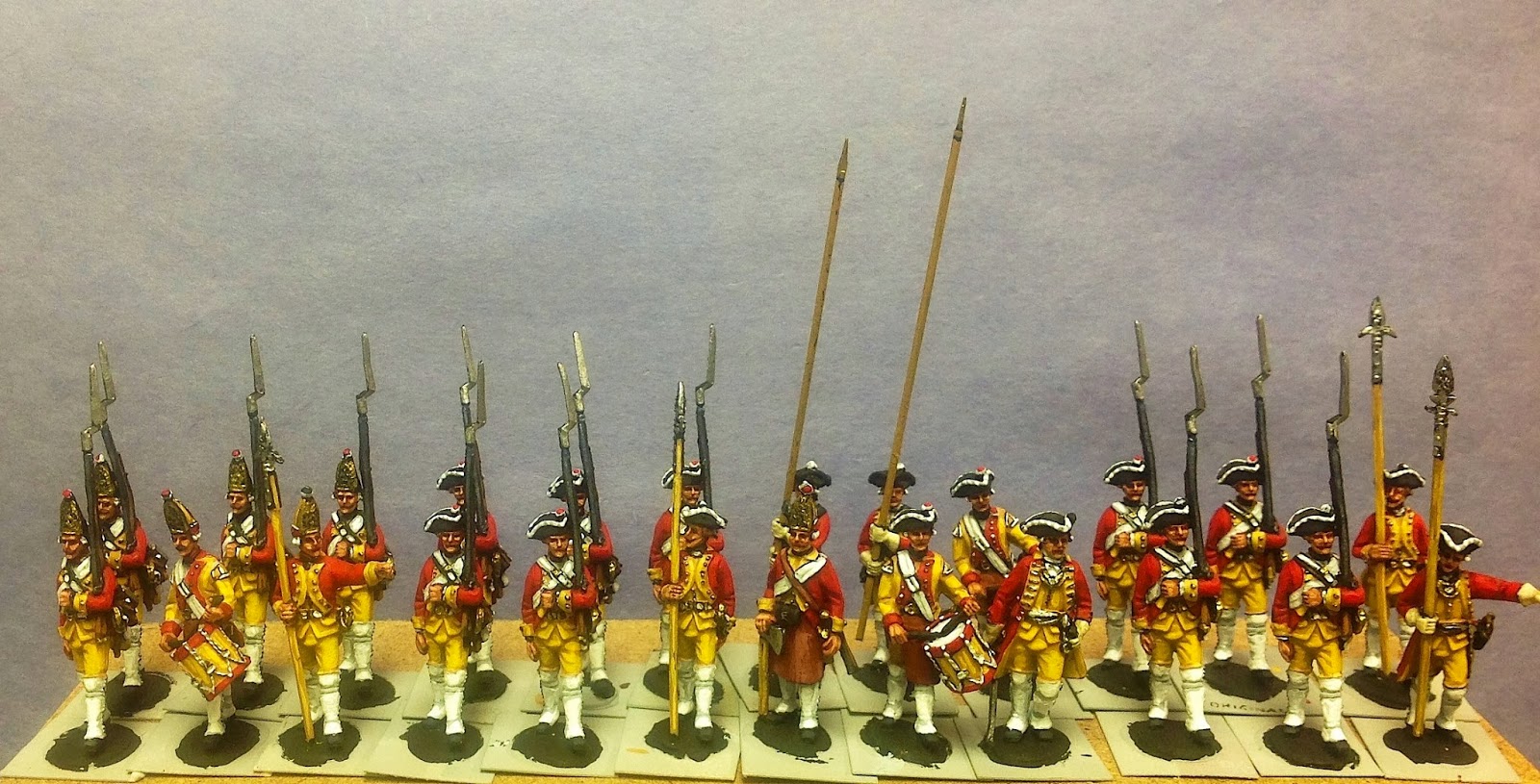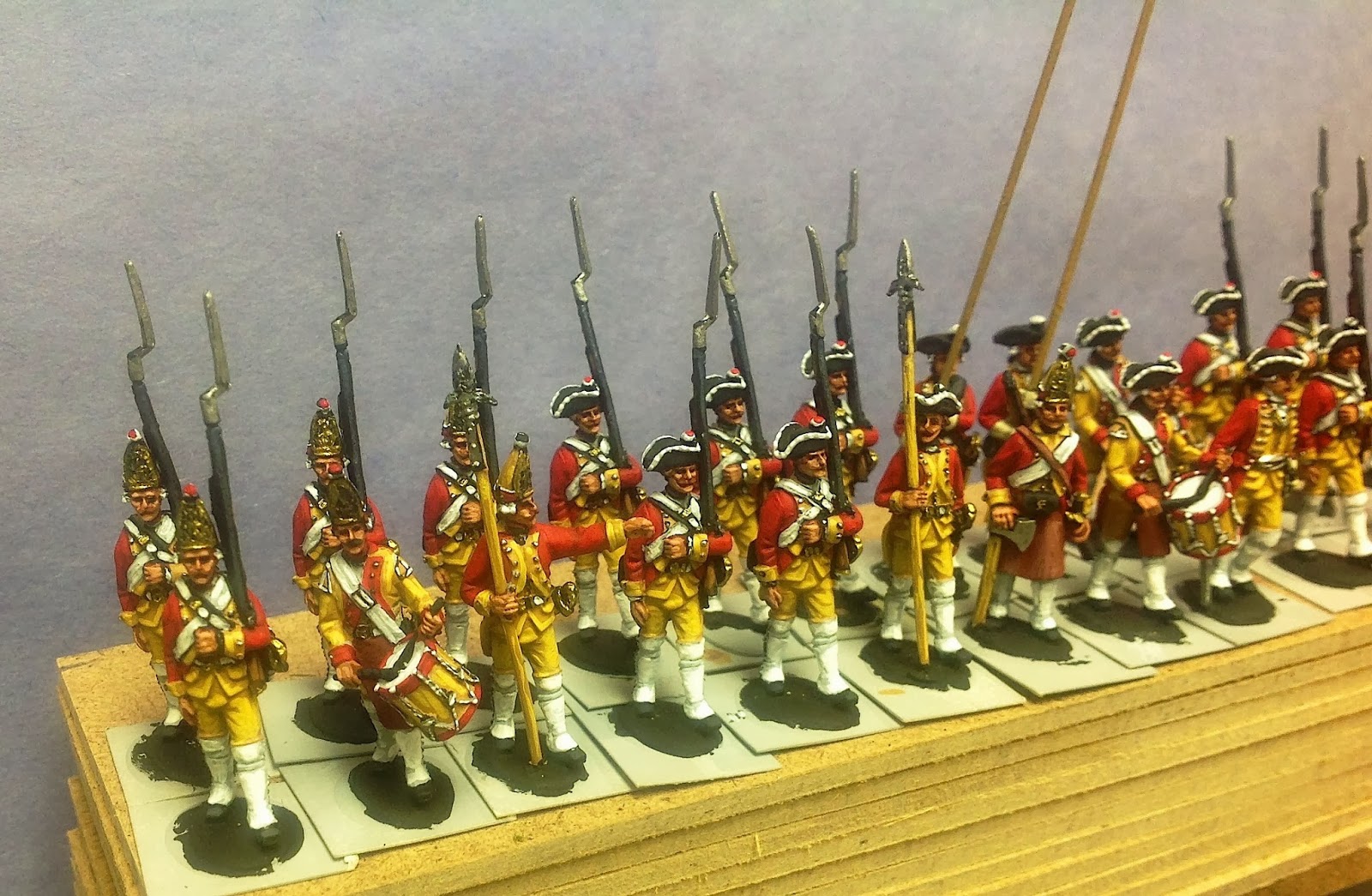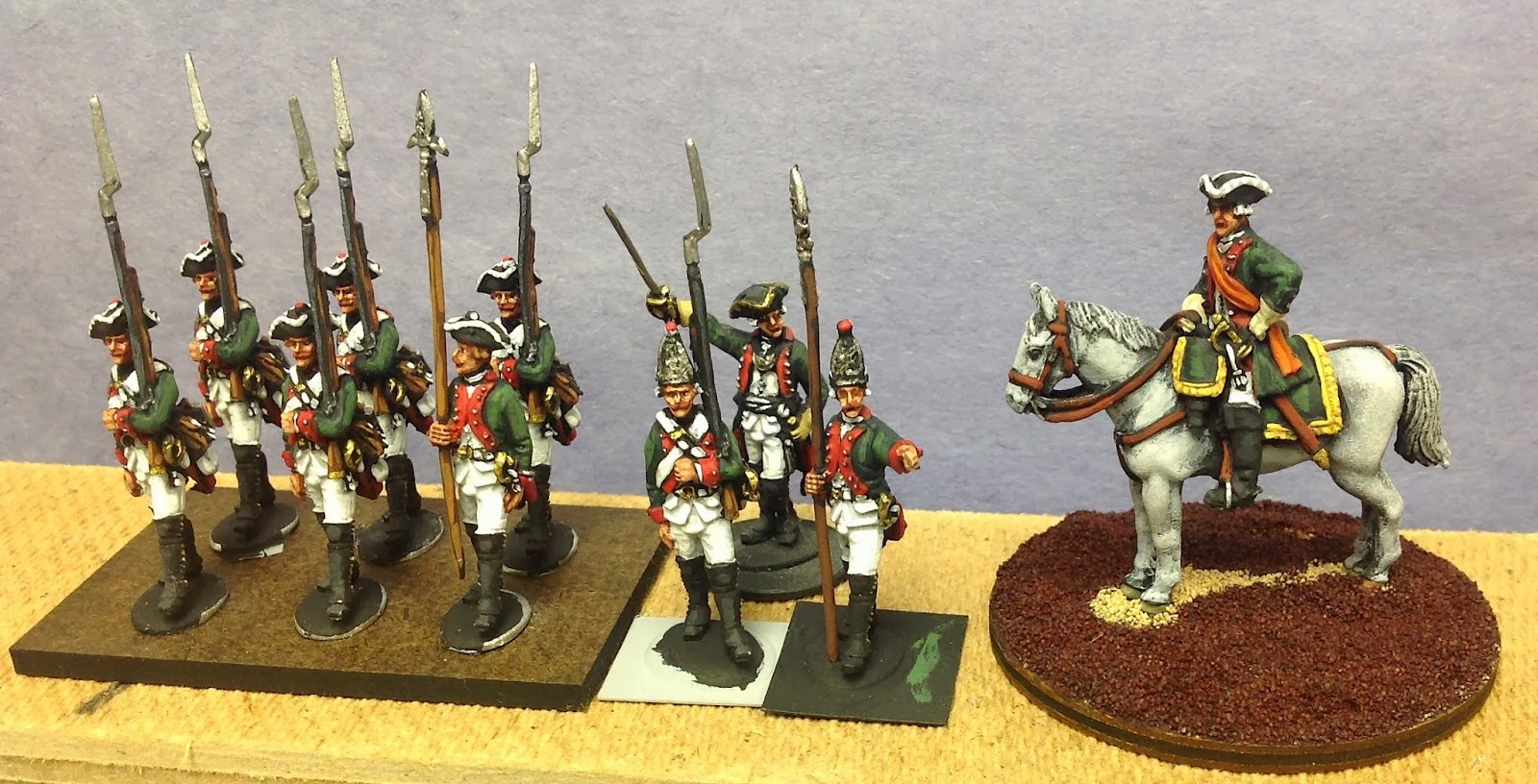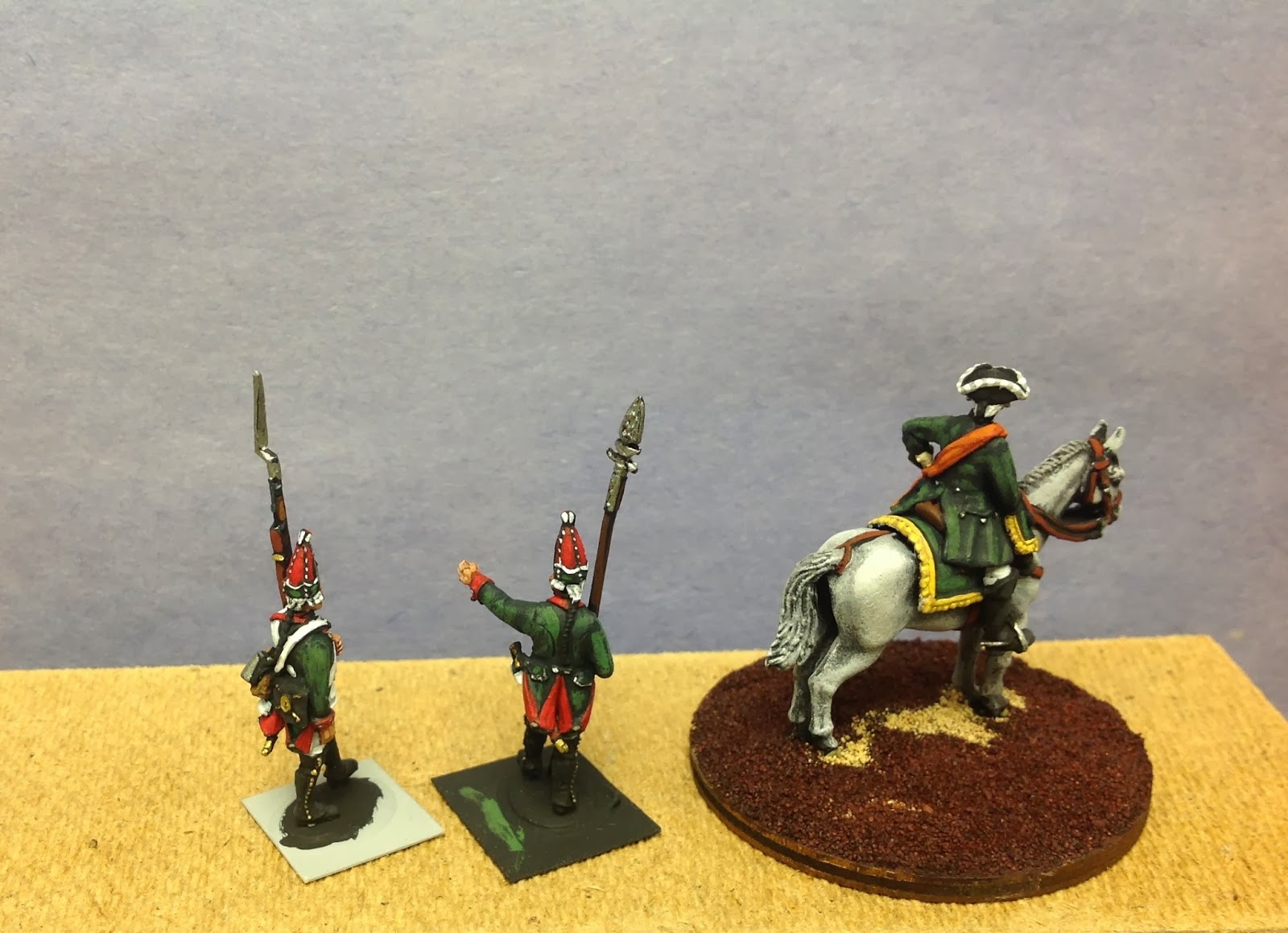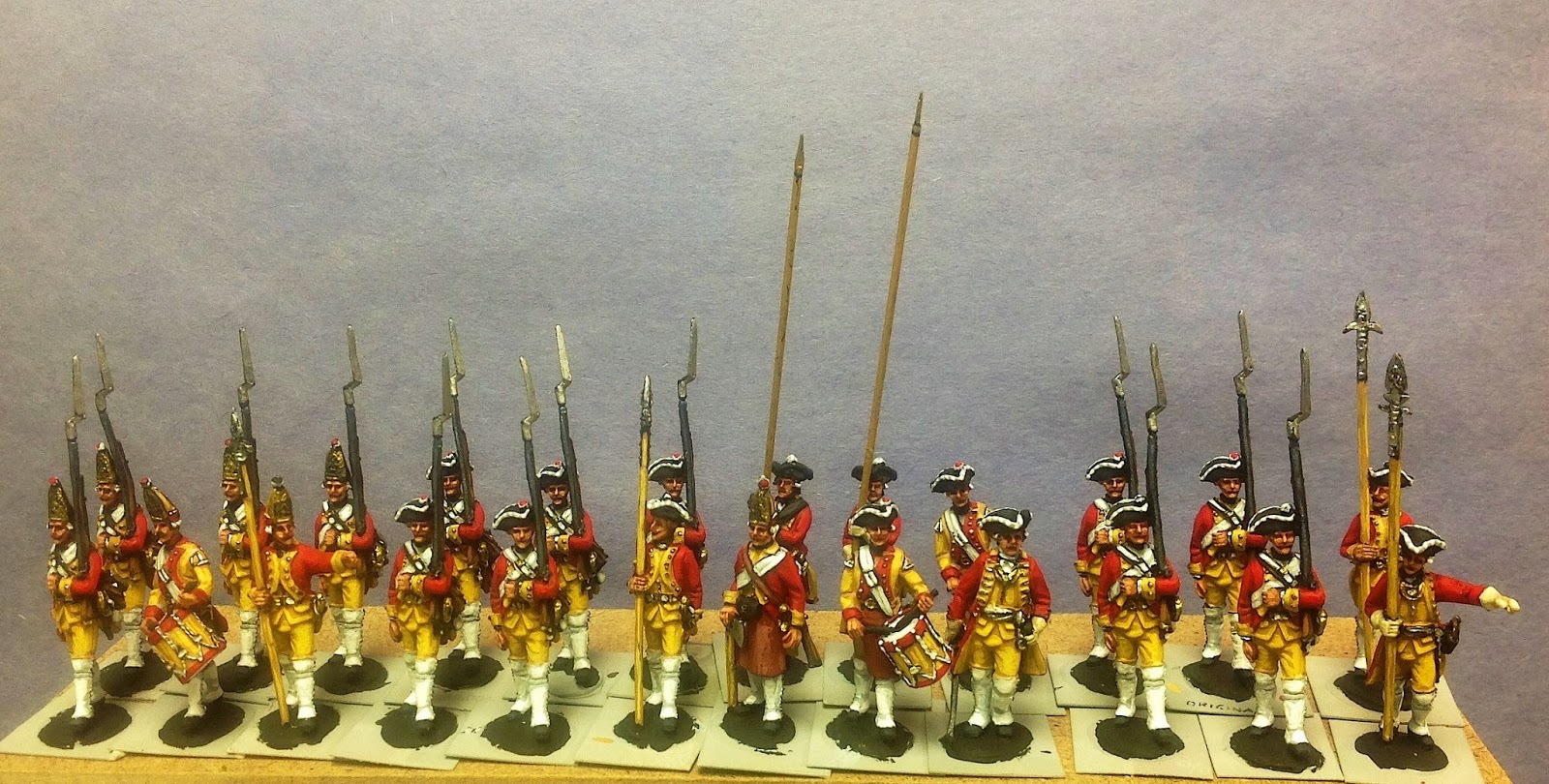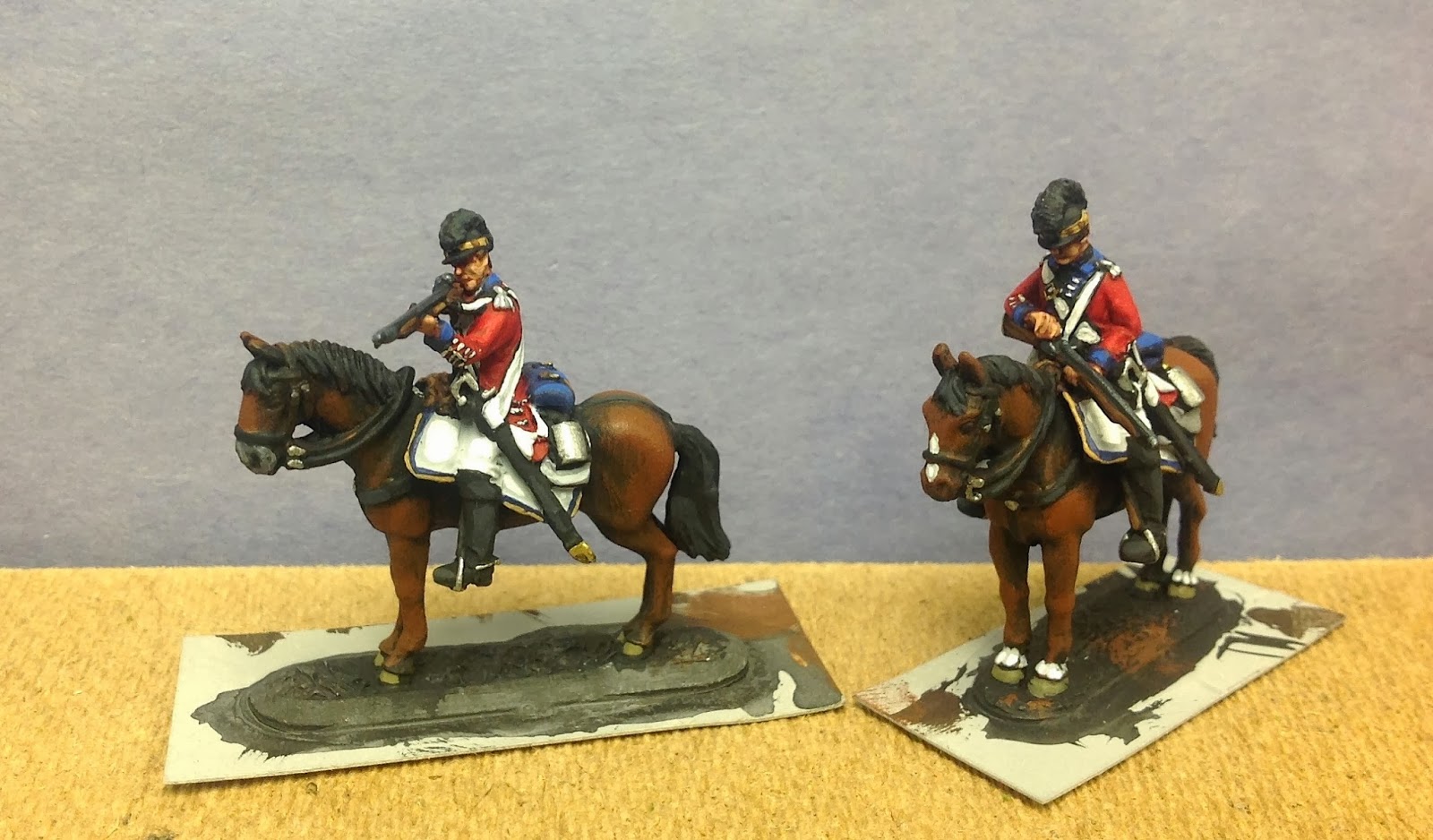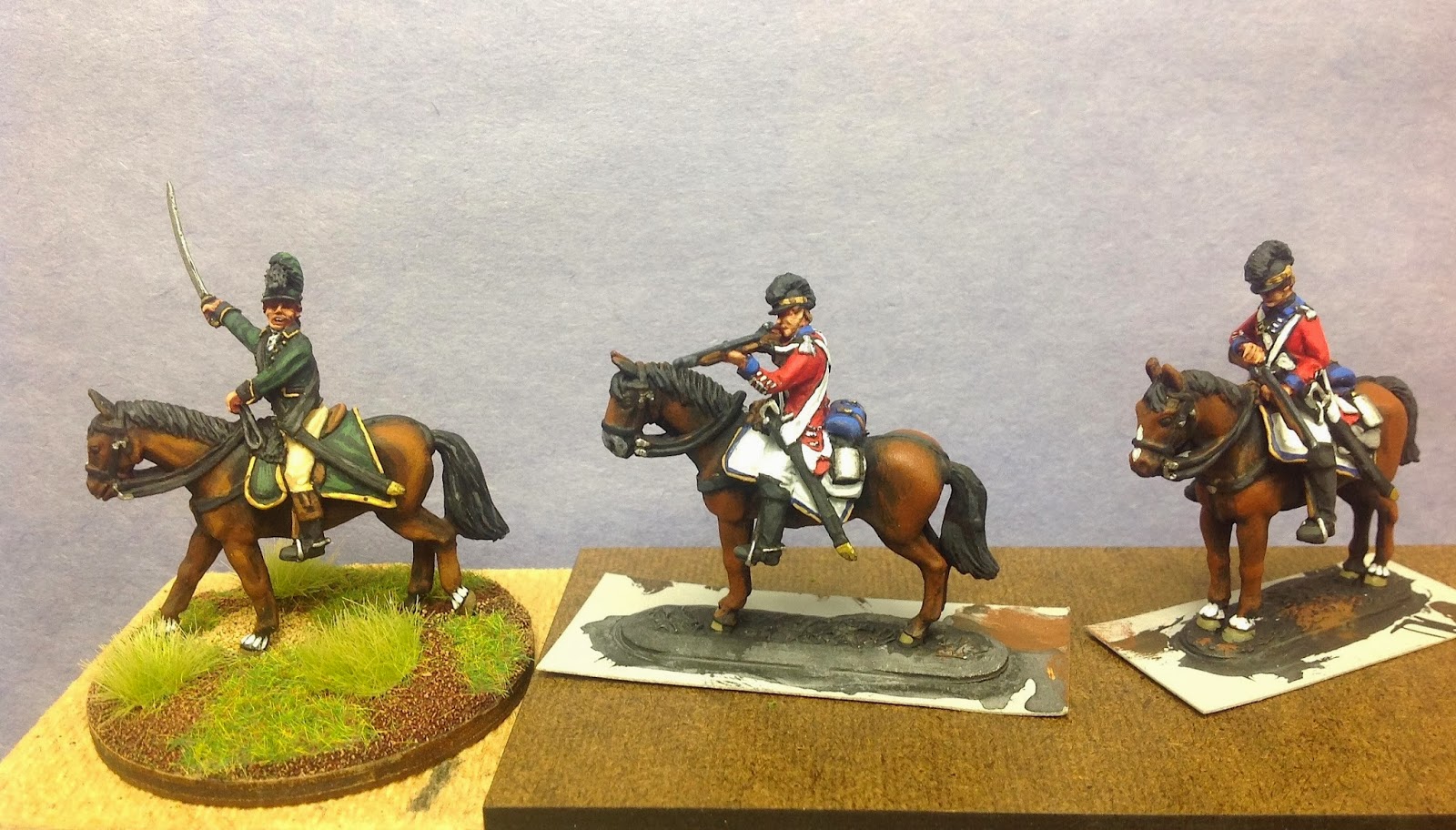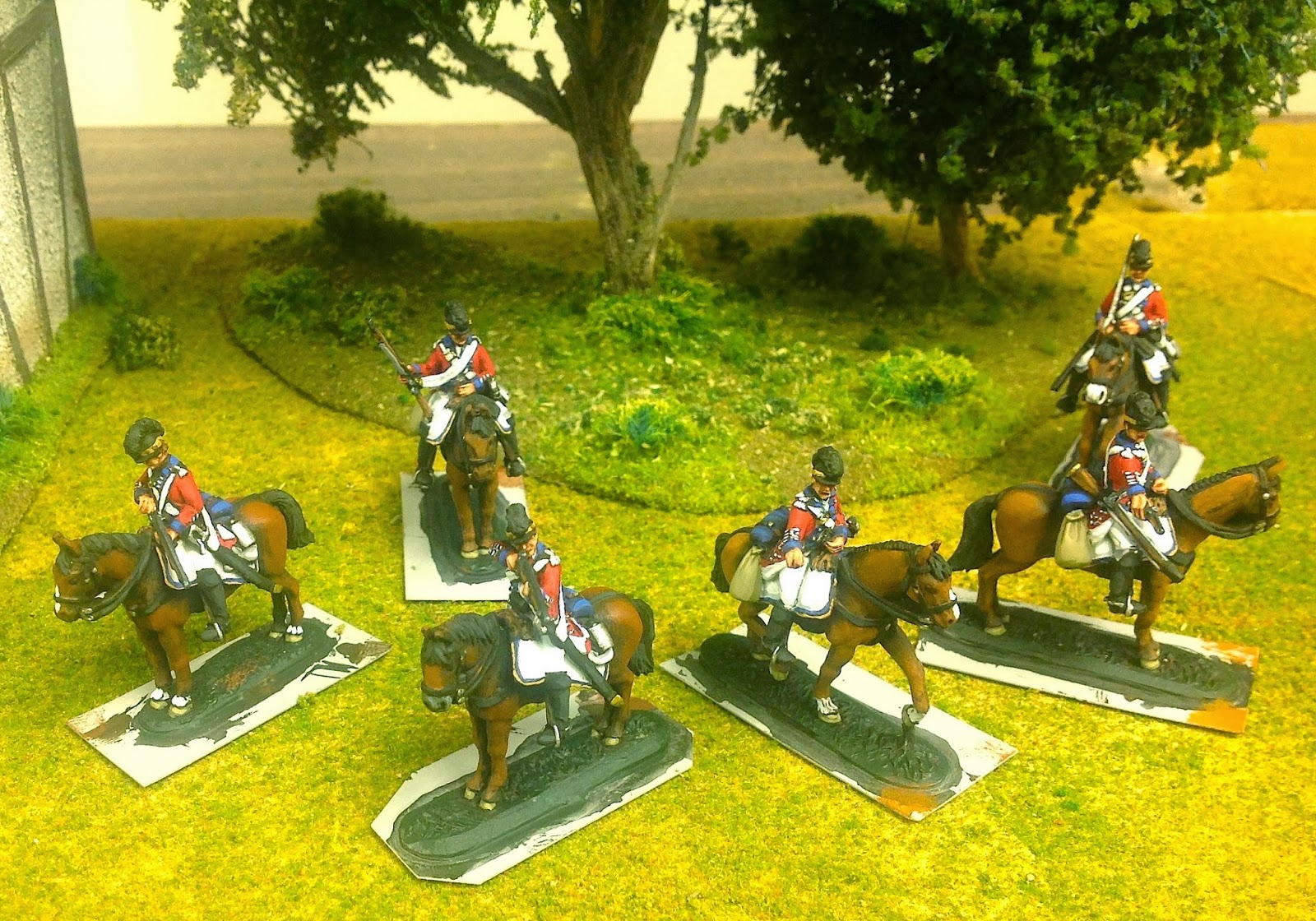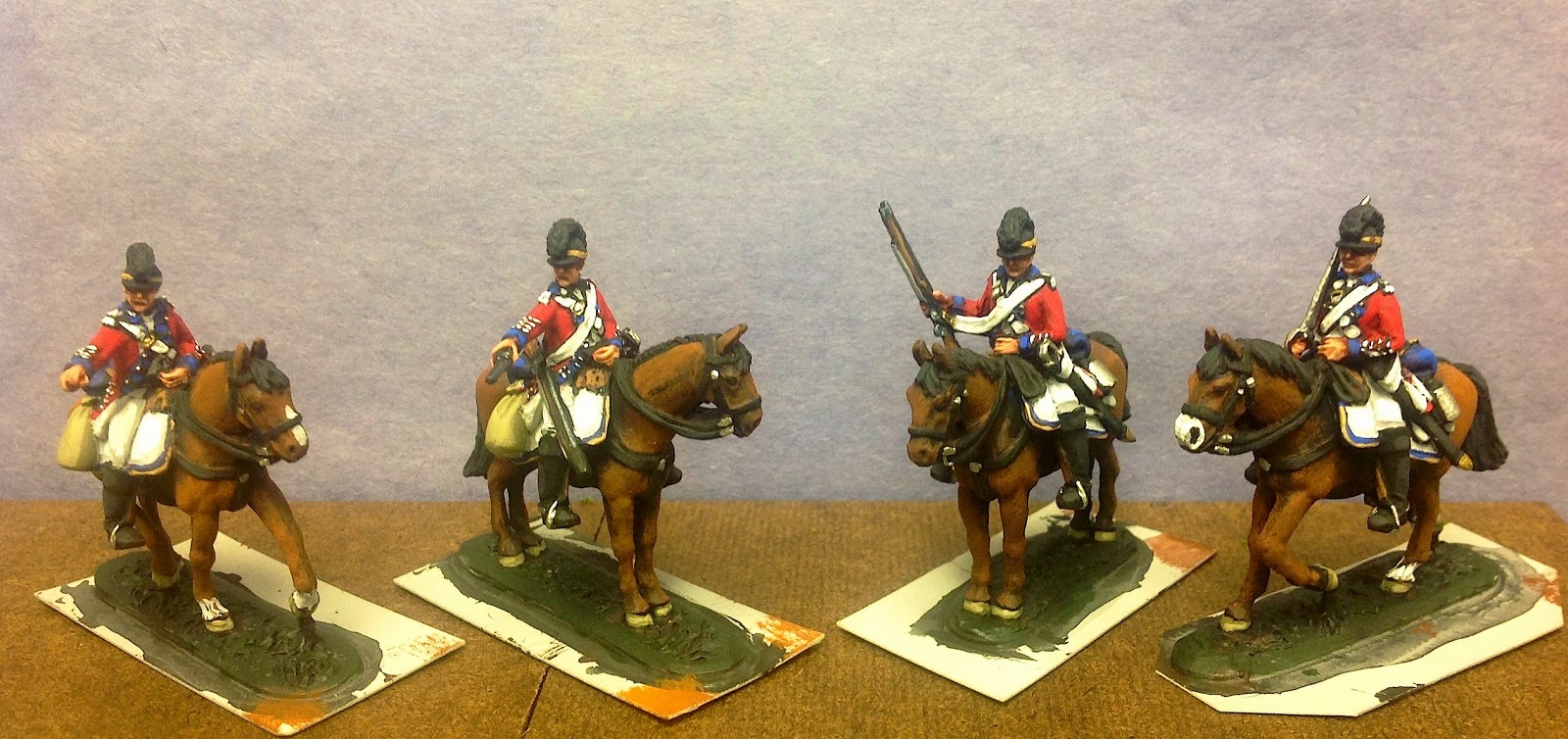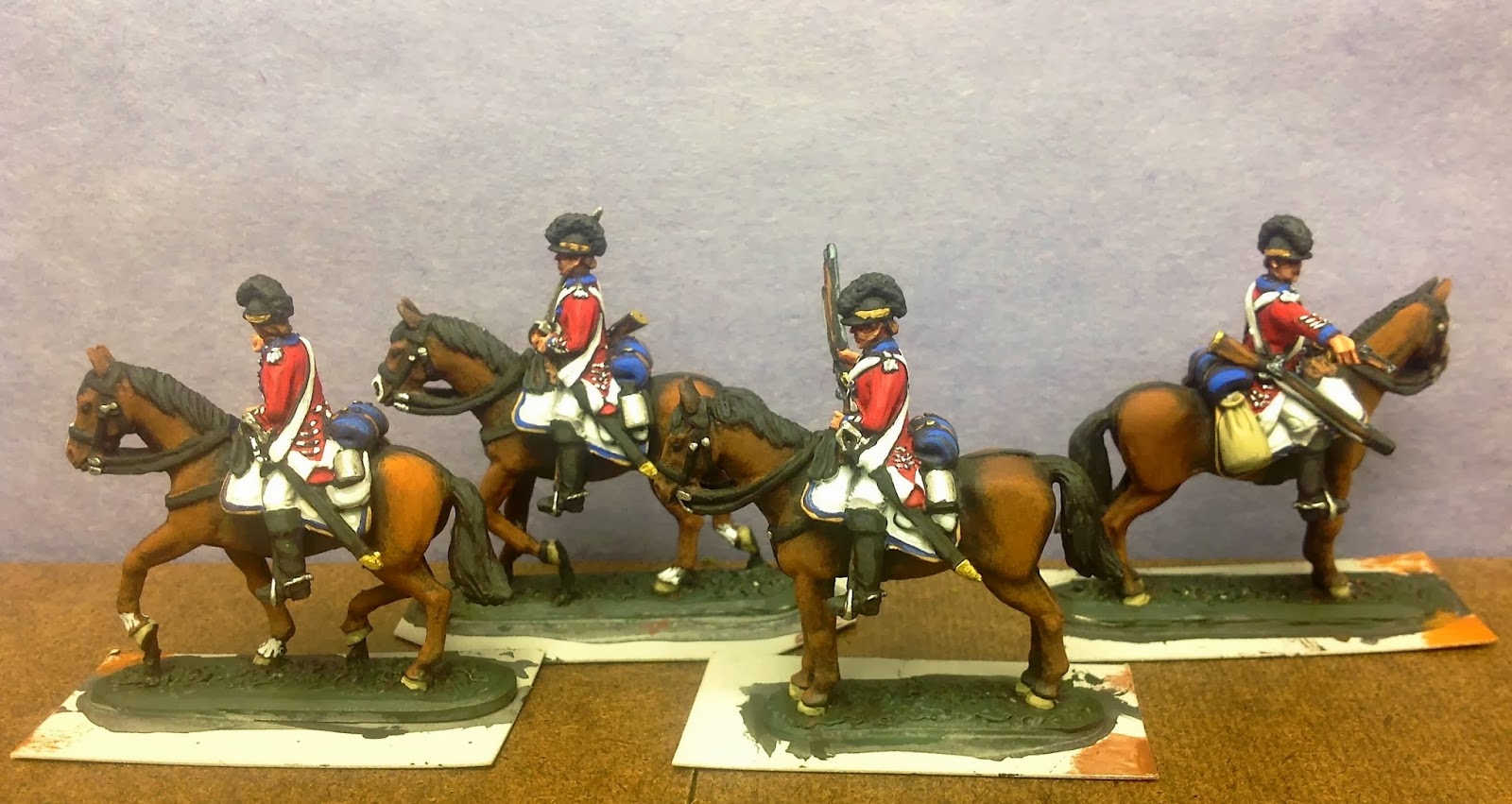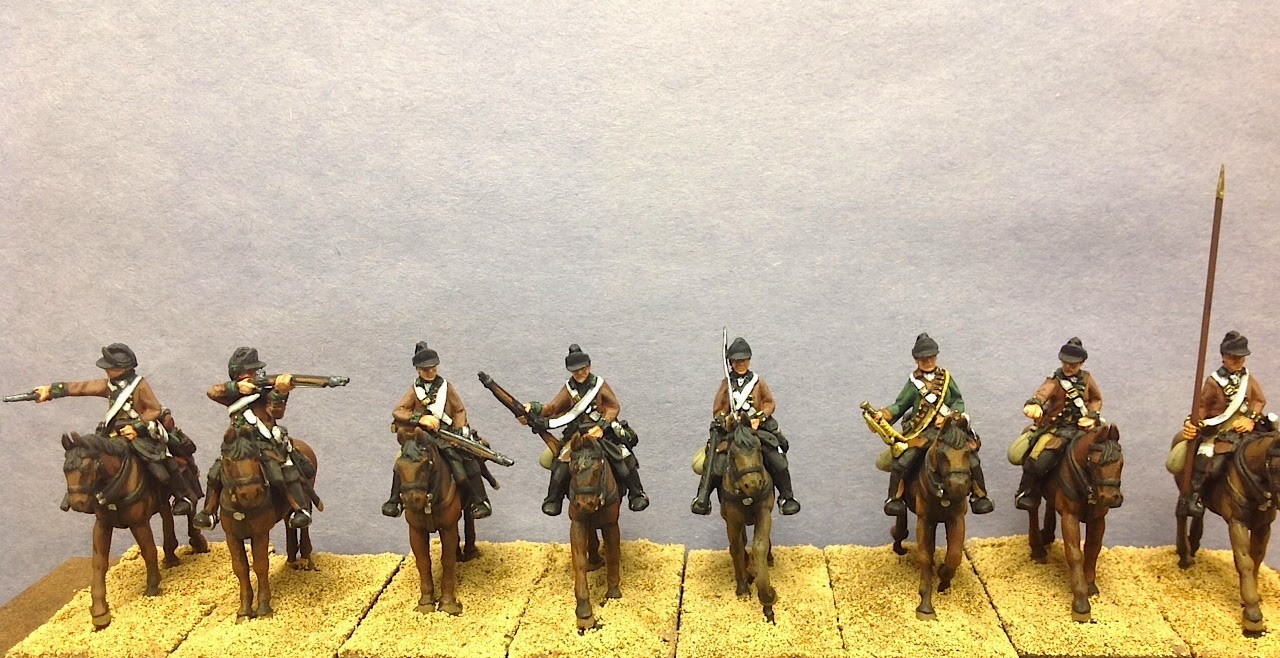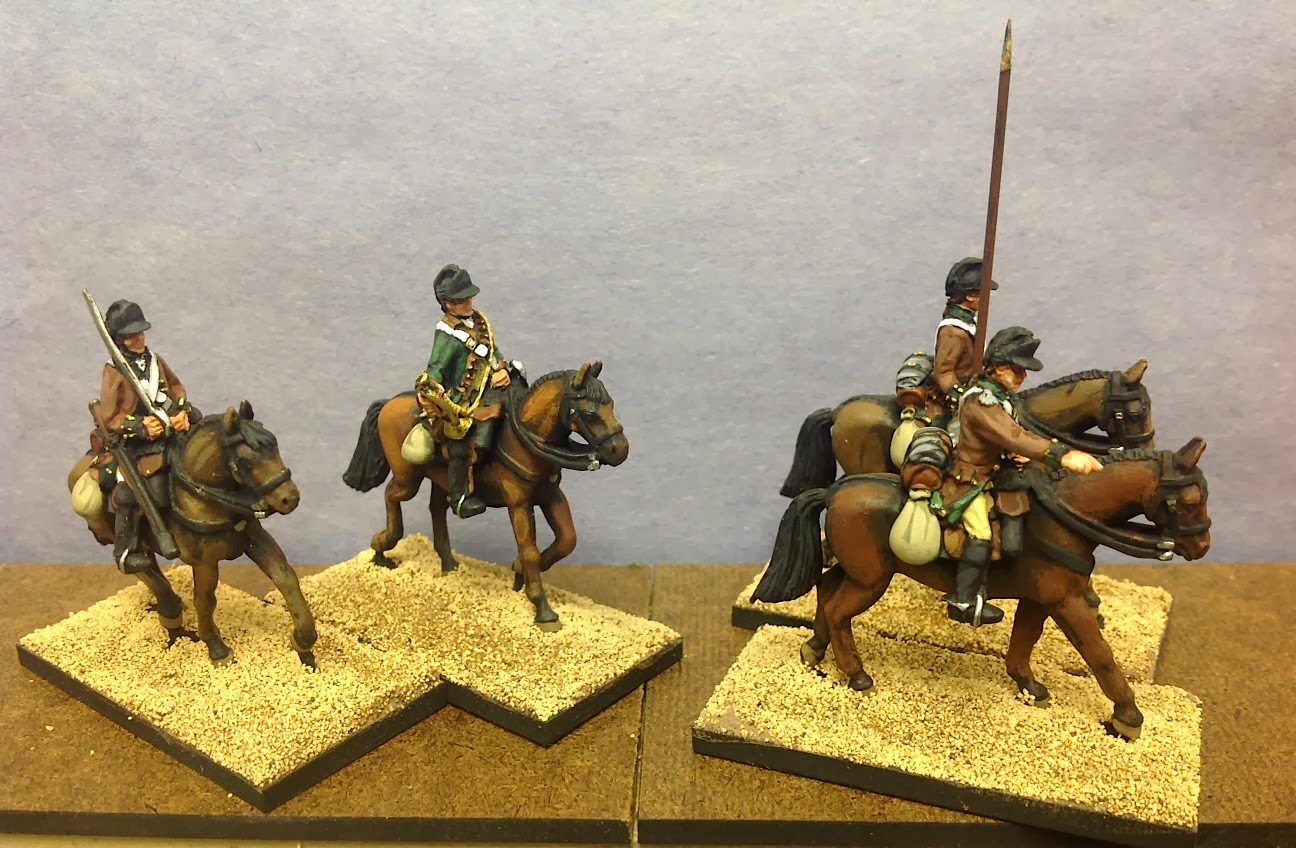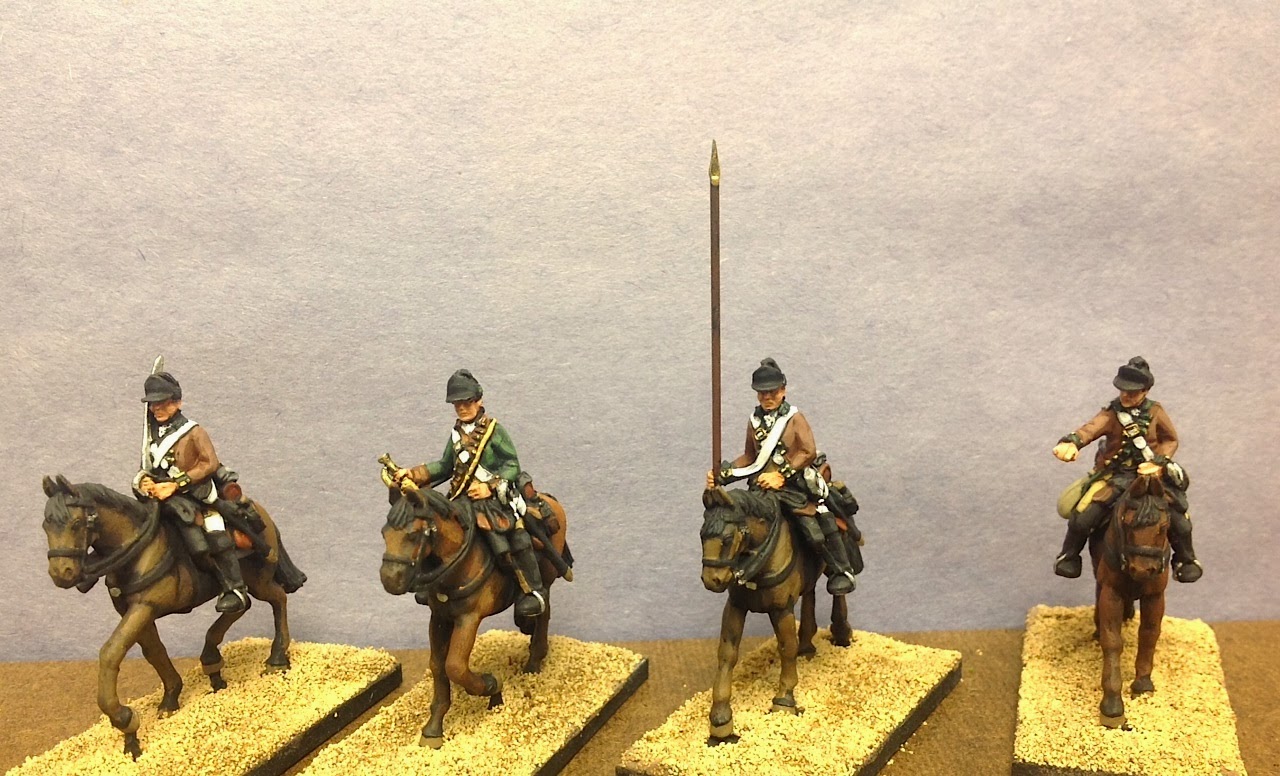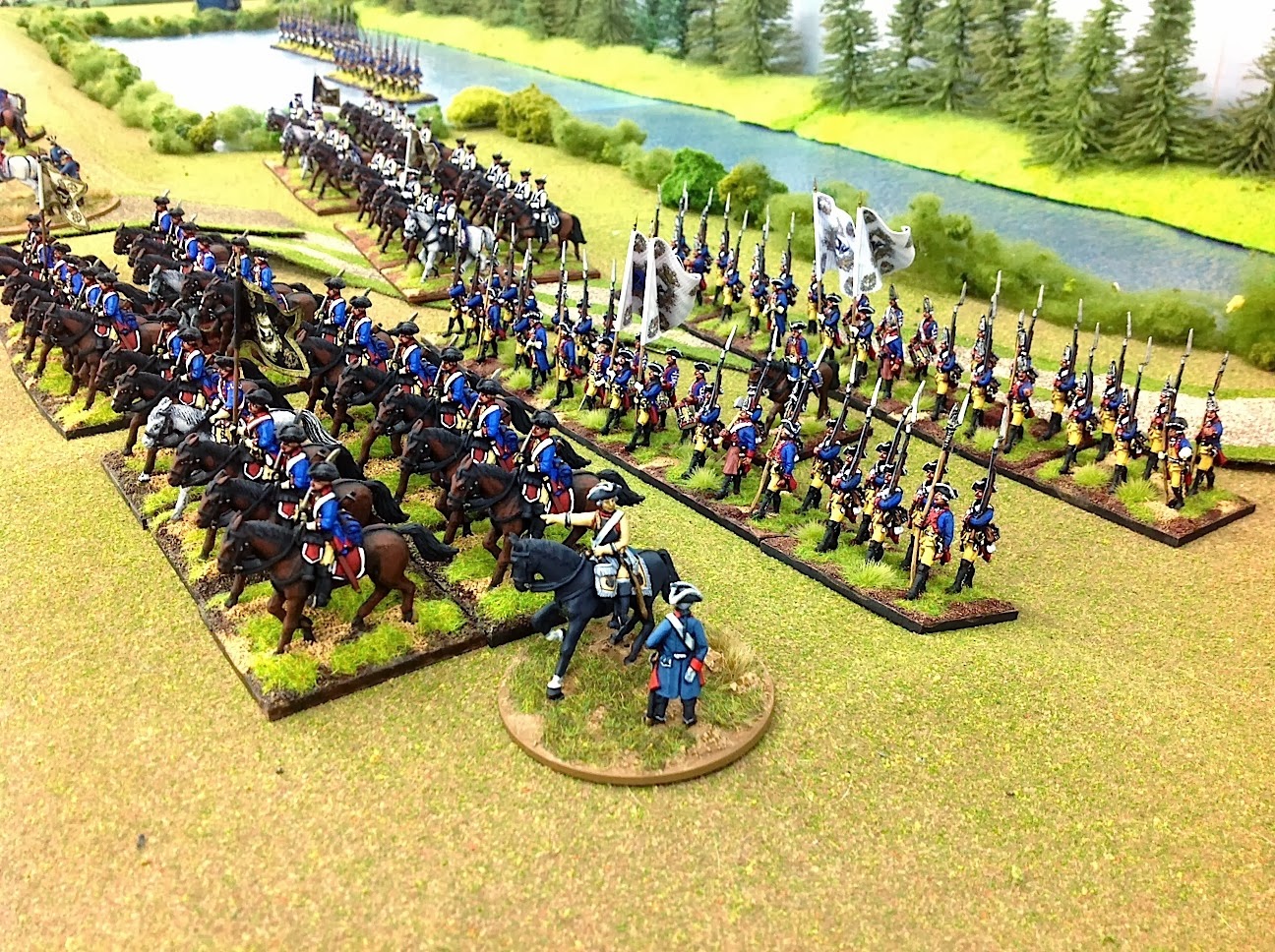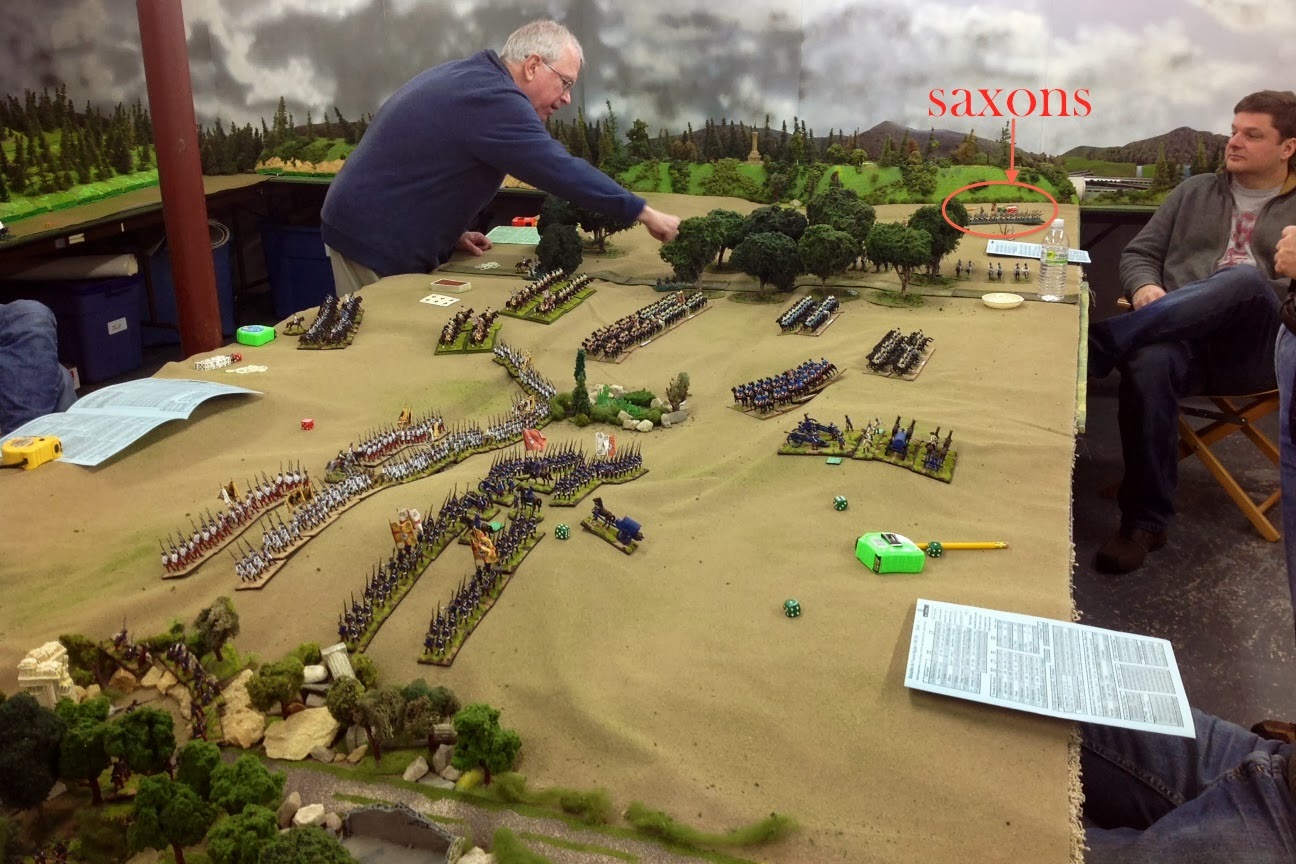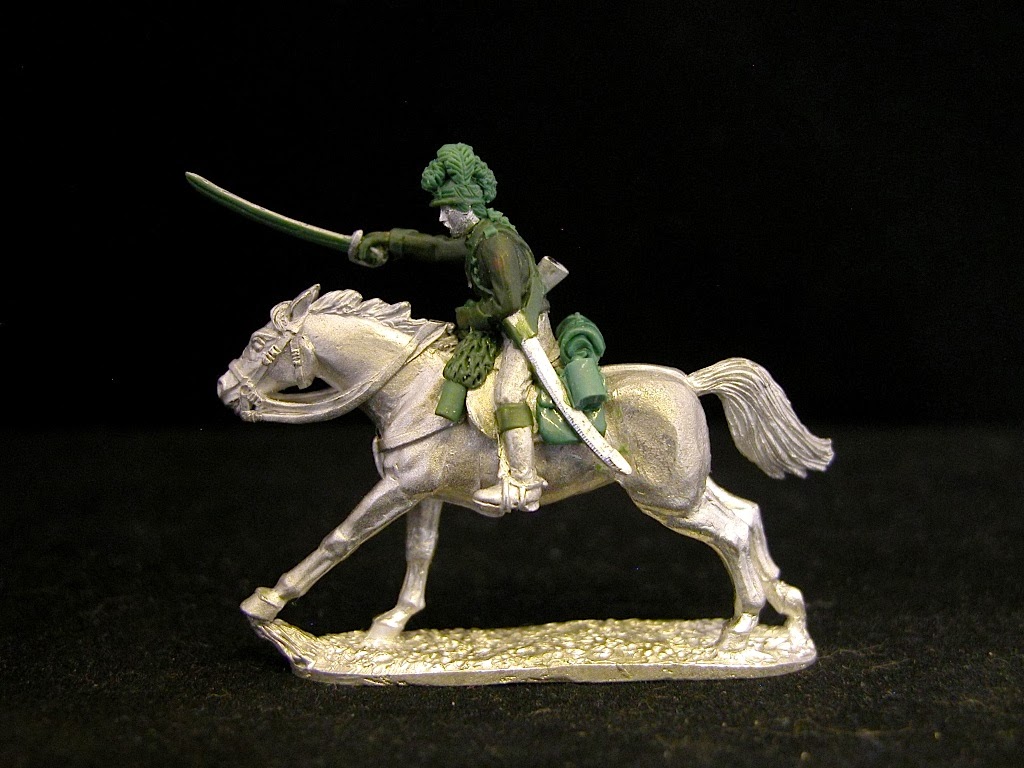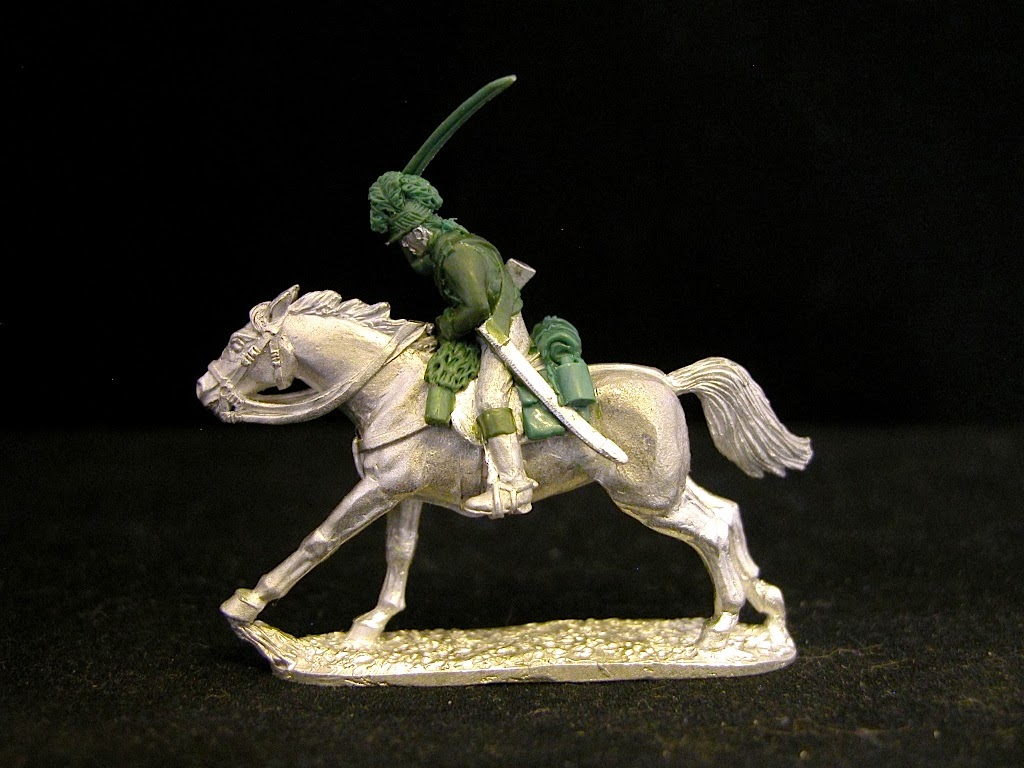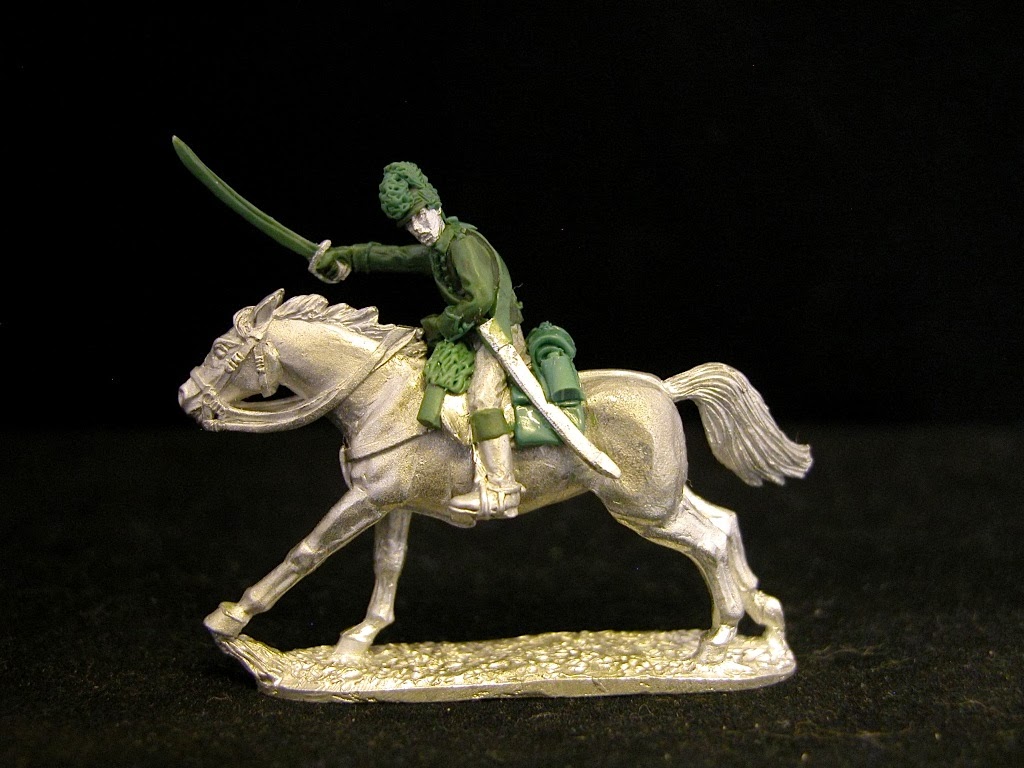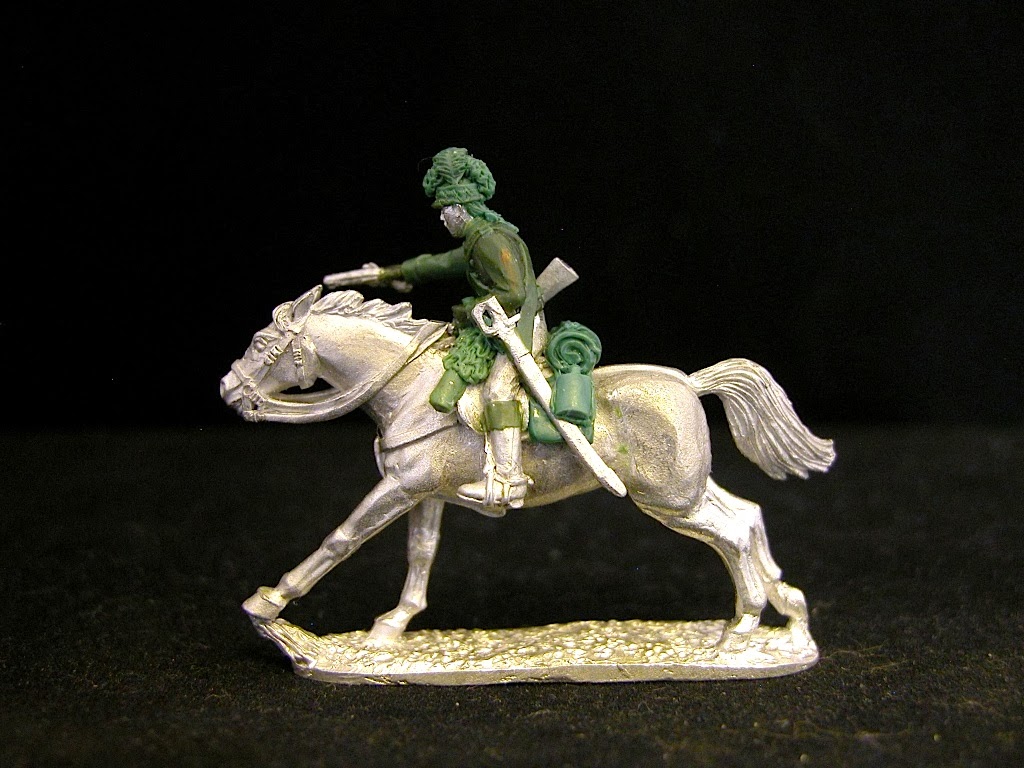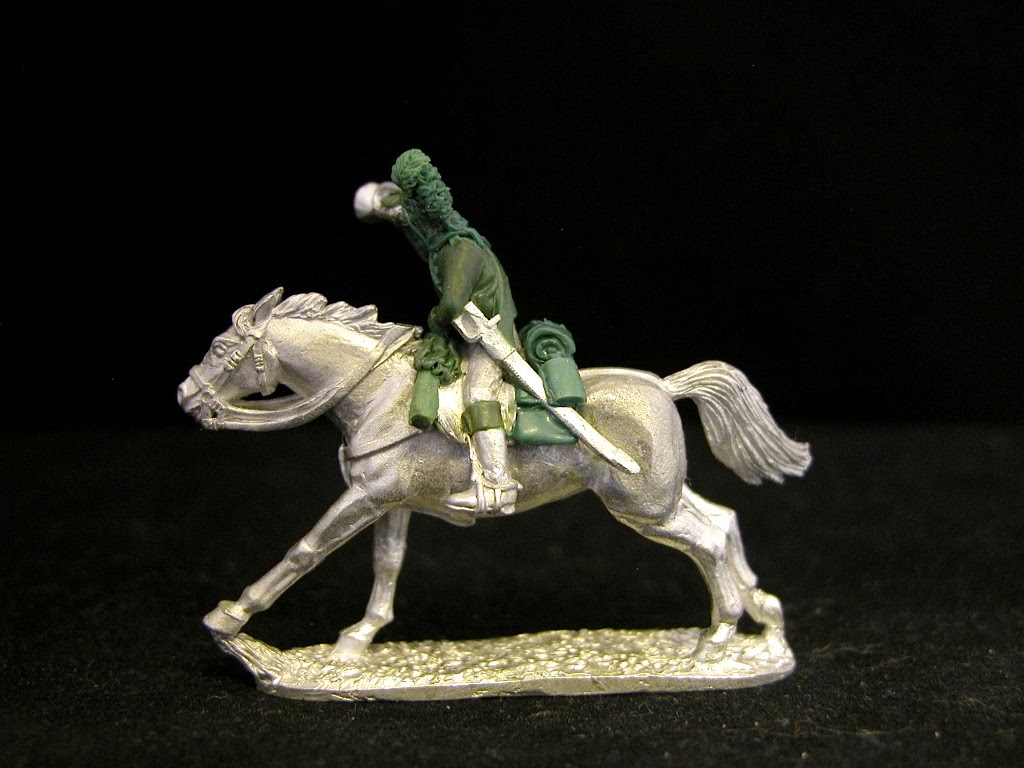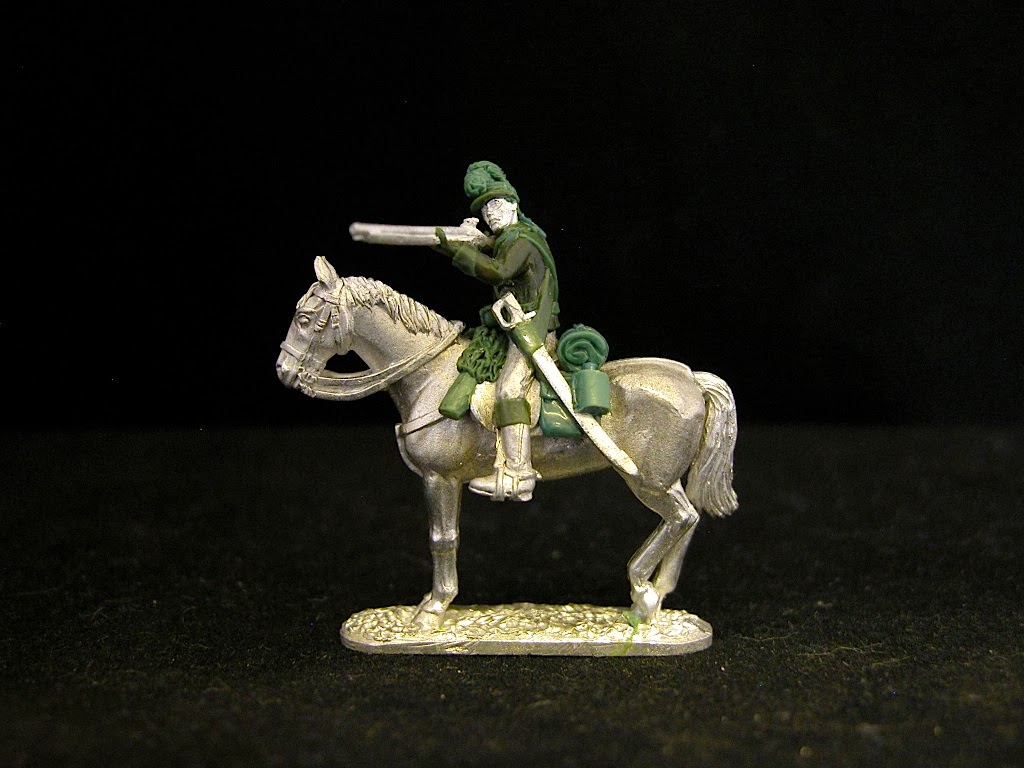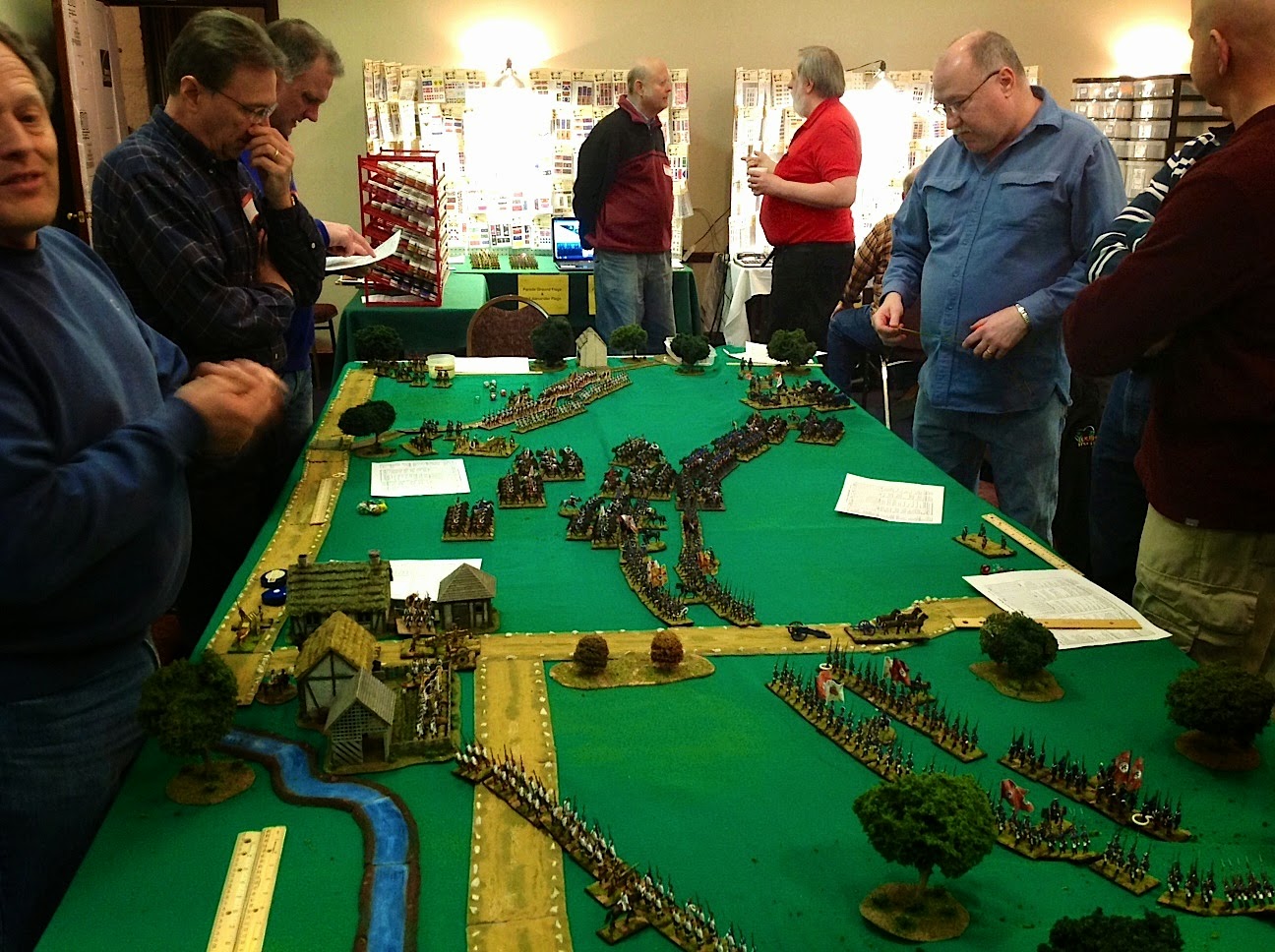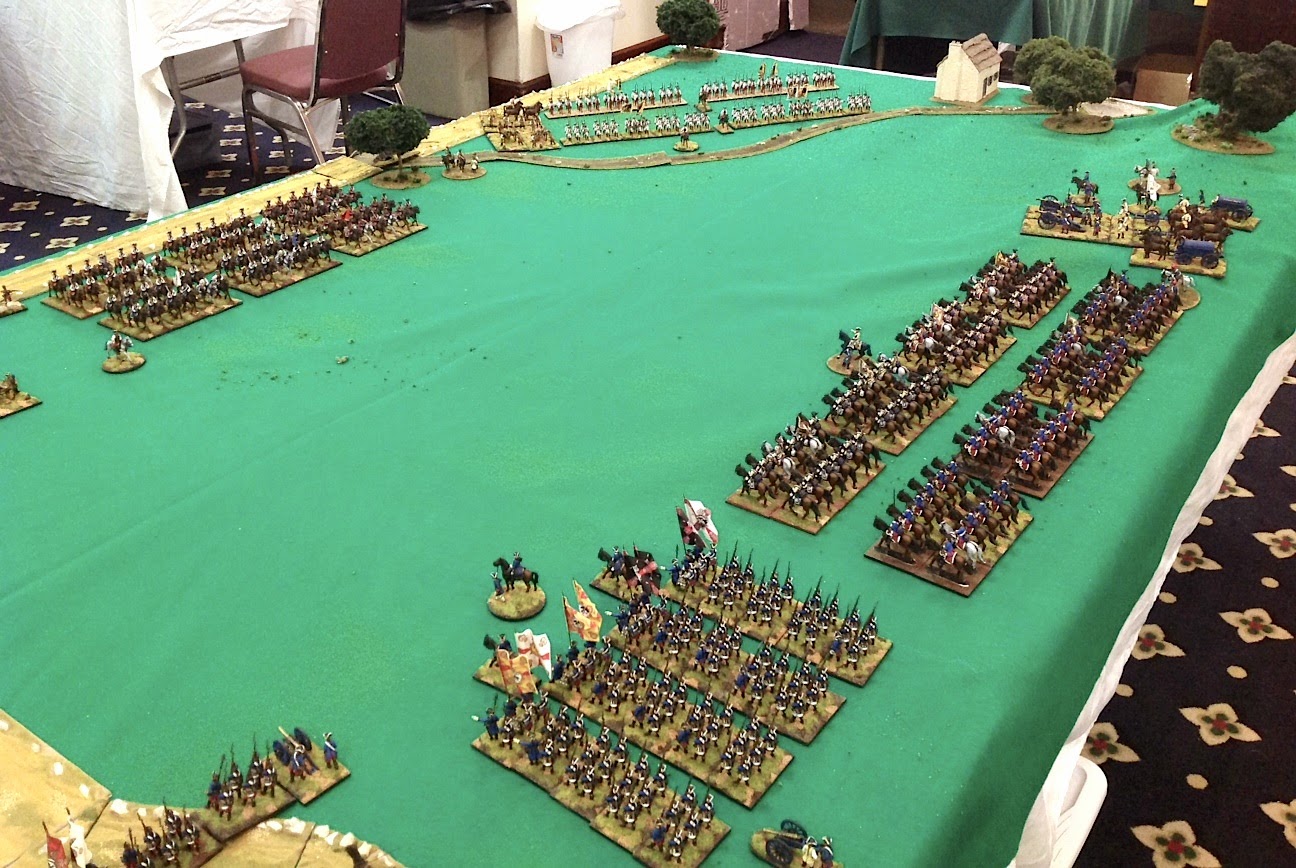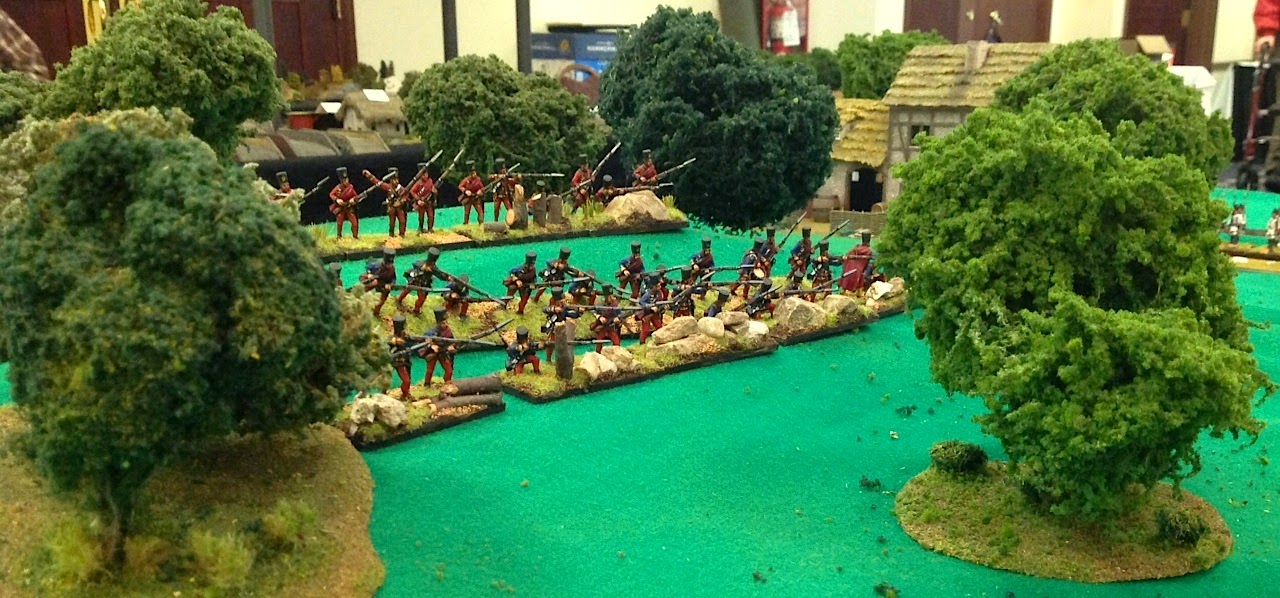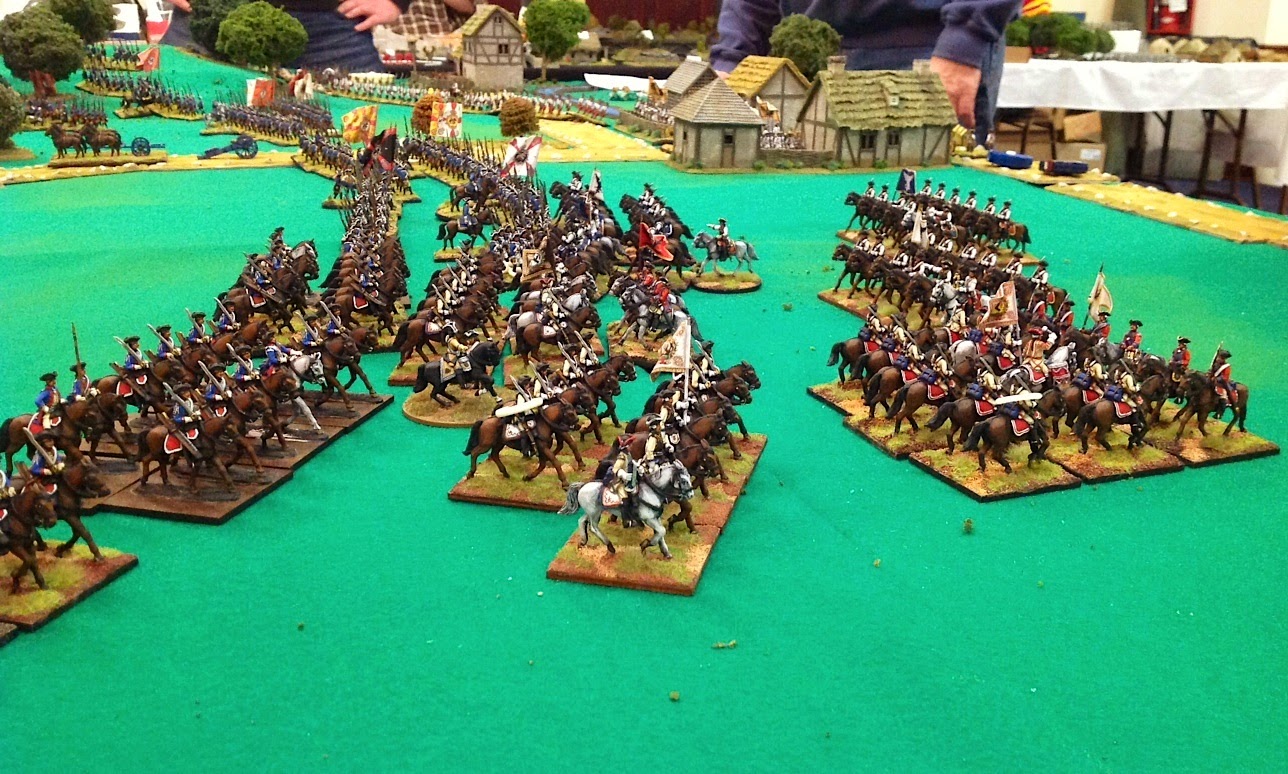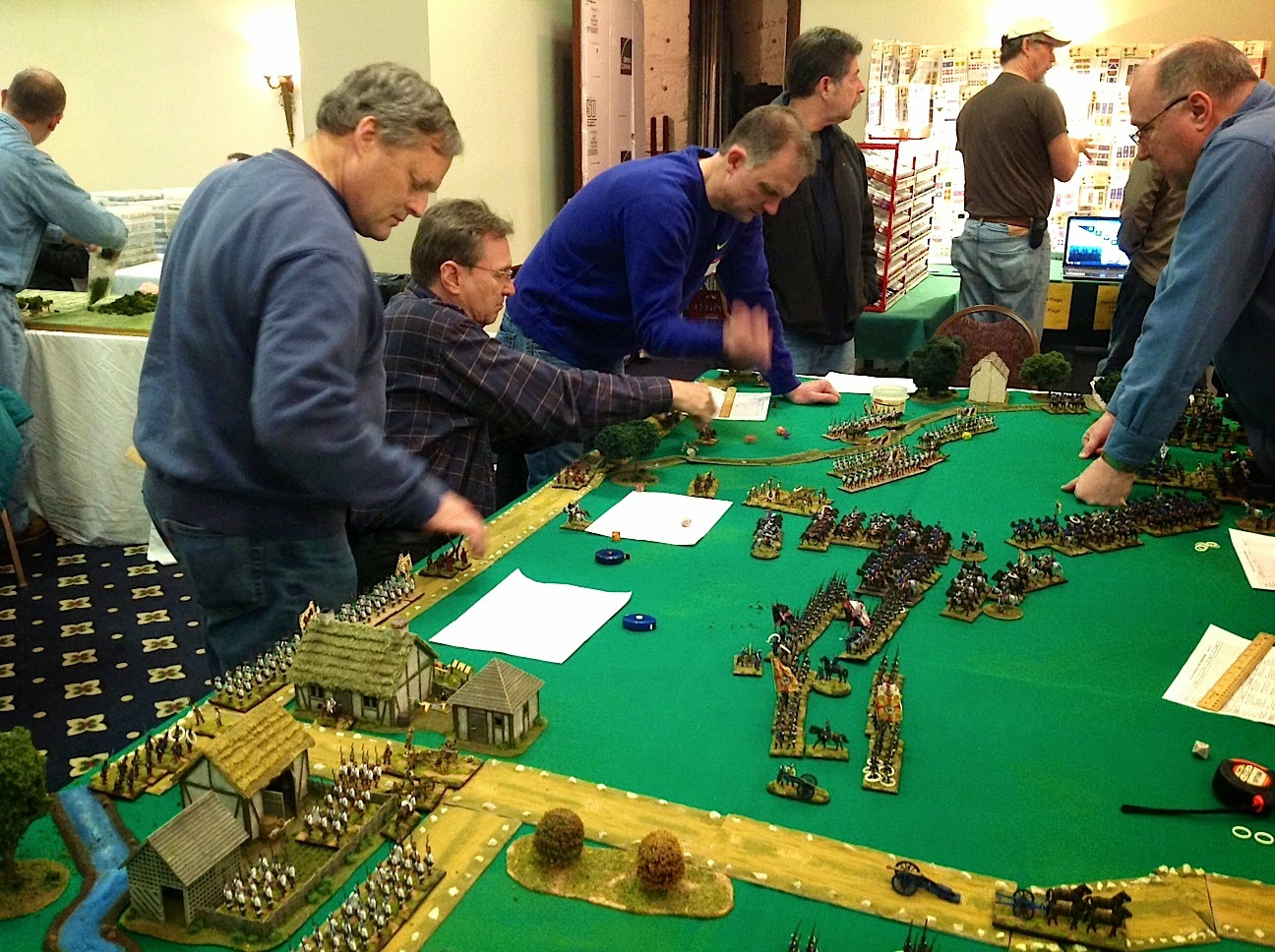![]() |
| My own, well-thumbed through copy showing a little wear and tear on the corners of the dust jacket. The picture on the cover depicts the Battle of Lobositz. |
I received my copy of Charles S. Grant's latest wargame book, Wargaming In History - Volume 9 (SYW), last November (2013) and I have been remiss in not getting around to giving it a review. The book covers the first battles of the Seven Years War in 1756 and 1757 and include Lobositz, Reichenberg, Prague and Kolin, so this book dovetails nicely with Volume 4, which covers Hastenbeck, Rossbach and Leuthen. Taken together, Volumes 4 and 9 virtually cover the whole opening campaigns of the SYW.
Grant usually begins his books by giving the reader a peek into the structure and organization of his famous VFS and Grand Ducy of Lorraine armies as well as any new ideas or tweaks that he has developed for The Wargame Rules. Volume 9 starts with a discussion of rules changes covering the use and deployment of grenadiers and his new cavalry organization (the same number of figures as before, only now they are organized into two squadrons). Additional comments regarding "dead ground" and how it is handled in the rules is also discussed.
Next part, the pictorial section covering the Grant wargame armies, is usually my favorite section of the book. This time, Charles does not fail to please as he provides pictures of some new elements, such as Sappers Pompier (firemen), the artillery train and siege park (with some rather stunning pictures of the whole siege park), various support wagons and camp scenes. The reader will find a lot of useful ideas that are worth stealing, um, er, I mean, borrowing, for one's own armies.
Part III - Lobositz
The battles of Mollwitz (1741) and Lobositz (1756) are probably the signature Grant family wargame battles/scenarios, as they were the ones featured in the original version of The War Game. While I have only played Mollwitz a few times, I never get tired of playing Lobositz. The book begins with the historical background to the battle accompanied by some of Christopher Duffy's maps, a complete order of battle for both sides of the conflict and some present day pictures of the important Lobosch Hill. From here, Grant lays out the wargame scenario for fighting Lobositz, complete with game maps so that the reader can copy the scenario to his own tabletop. Included are victory conditions for both the Austrians and the Prussians.
Finally, we get into the meat of the game with a battle report of the scenario, as played by Grant and his daughter, Natasha (commanding the Prussians). The battle played out over the course of two days and encompassed 30 game turns before reaching resolution. I am happy to report that Natasha led the Prussians to victory. I count eleven color pictures of the battle in progress and the large "Wargame Rules" battalions look very splendid indeed. How could one not be inspired to try the Lobositz scenario after reading this chapter of the book.
Part IV Reichenberg
The next scenario covers the battle of Reichenberg, fought on April 21, 1757, between von Bevern's Prussian column and the Austrian general Konigsegg. As many of you probably know, Frederick invaded Bohemia in the spring of 1757, descending into the province with four separate and converging columns of the Prussian army. Their objective was to link up near Prague and fight the decisive battle of the war and hopefully end it right then and there.
This was a smaller battle than one usually finds during the SYW, with 14,000 to 16,000 soldiers per side. The battle occurred as a prelude to the battle of Prague and is one that does not get a lot of mention or coverage in either the history books or in the wargaming forum. Thus Reichenberg will be a new battle for many of the readers, which makes the book worth the purchase for this reason alone.
This time, Charles and Natasha switch roles, with Charles commanding Bevern's Prussian army and Natasha conducting a fighting retirement from the defensive position at Reichenberg. Again, I am happy to report that the Prussians won the wargame, just as they did the historical battle.
Part V - Prague
Prague is a significantly larger battle than the previous two scenarios in the book, and so Grant describes how he approached the task of boiling the battle down to a suitable action on the wargaming table. The scenario focuses on the far right flank of the Austrian army, as it shifts the facing of its battle line to counter Frederick's attempt to march around the Austrian flank. This scenario involves a lot more cavalry than either of the previous scnearios, and some of the pictures of the massed regiments of horse in hand to hand combat are truly stirring stuff. The battle follows the familiar format of presenting the historical background, the order of battle for the historical forces, a description of how Grant reduces the forces to create a "doable" tabletop game, and finally, a description of the actual wargame augmented by lots and lots of pictures. As with history, the Prussians won Prague again, but the Austrians gave a good account of themselves and it was certainly no cake walk for the Prussians.
Grant reports that his new grenadier and cavalry rules received a good work out in this game and that they produced the intended results. Dividing the cavalry regiments into smaller squadrons seemed to have the desired effect of creating more ebb and flow to the cavalry melees and so I am tempted to apply some of these ideas to my own rules and armies and see what happens.
Part VI - Kolin
I have refought Kolin on a number of occasions (at least 4 times, if I recall correctly) and the battle is a large one that includes a number of problems in its transference to the tabletop. Charles rightly focuses the scenario on the Austrian right wing, near Krechor village, rather than trying to set out the terrain for the entire frontage of the Austrian position atop several hills. Grant gives us two different Kolin scenarios: one is the larger attack on the Austrian right flank and the other is a smaller scenario that involves the fighting in and around Krechor village (called "Clearing Krechor"). The latter scenario will probably interest the majority of gamers as it is a smaller action that requires fewer miniatures to play, thus making the game a doable event for most wargamers.
Part VII - Cavalry
The next section of the book covers aspects of cavalry in the mid 18th Century augmented with 13 colour plates drawn by Bob Marrion - wonderful plates and very useful as uniform painting guides.
Part VIII - More on Cavalry & Grenadiers
In this section, Charles provides more detail about the changes in the cavalry organization that he is now using for The Wargame Rules. While the regiments still retain the 24 troopers and 4 officers organization, he now divides the regiment into four squadrons of 7 figures. He then explains how the changes affect a cavalry charge in the rules so that you can implement the changes into your own games. There are also sections regarding "the first volley" and the new organization of grenadiers in the rules. This section is also sprinkled with more pictures of Charles' grenadiers in their converged battalions.
Conclusion
Well there you have it - a rather comprehensive review and overview of Wargaming in History - volume 9. I heartily recommend adding this book to your collection if you have an interest in the Seven Years War. You get orders of battle for all four of these important battles, ideas for converting the OOBs into wargame scenarios, after action reports, and lots and lots of colour pictures of big battalions of Minden Miniatures, RSMs, some Eureka Miniatures, and probably several other brands. If you buy Volume 9, I would also recommend buying Volume 4 so that you can tack on Rossbach and Leuthen scenarios and have the whole 1757 year in wargaming.
